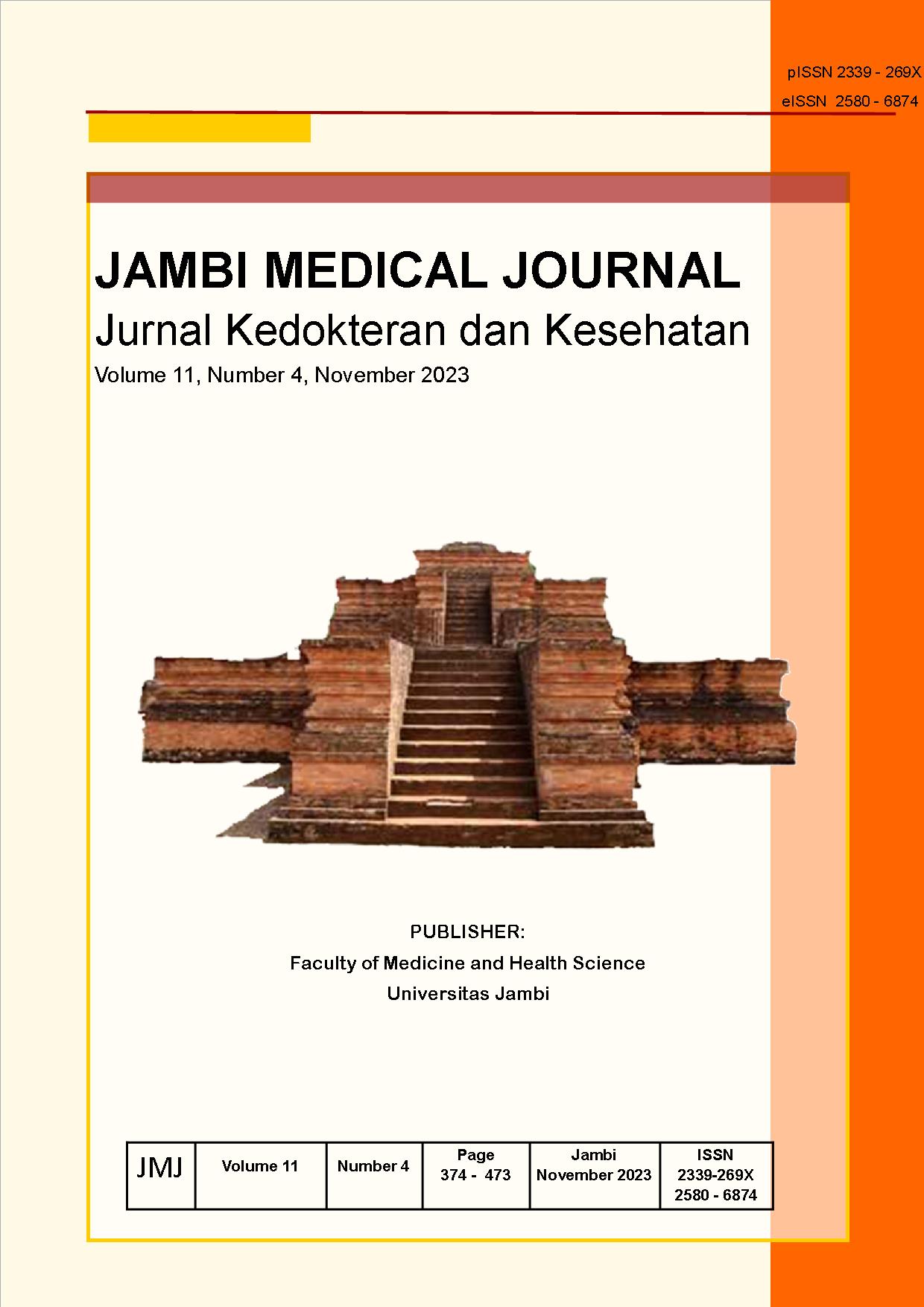The Relationship Between Leucocytes and Bacterial Count in The Wound Swab Sample with Colony Counting In Wound Tissue Infection
DOI:
https://doi.org/10.22437/jmj.v11i4.22061Abstract
ABSTRACTBackground: Wound tissue infection is a problem in developing countries. The cause of the infection must be known, so that appropriate antibiotics are given for that required microbiological examination. The number of Polymorphonuclear leukocytes (PMN) >25/HPF and the number of colonies >105/Colony Forming Unit (CFU) determine the occurrence of infection. Proving the relationship between the number of leukocytes and bacteria in the wound swab sample to the number of colonies in superficial Surgical site infection (SSI).
Methods: This study was an Observational analytical research design with 35 samples of superficial SSI. Microscopic examination: gram stain to see the number of leukocytes and bacteria in a large field of view. Culture examination: number of colonies, identification of microorganisms, and patterns of antibiotic sensitivity with automatic machines. Statistical analysis for the relationship between the number of leukocytes and bacteria to the number of colonies was Chi-square and logistic regression.
Results: Superficial SSI samples were more common at the age <60 years, with malignancy comorbid. The most common cause of infection is Escherichia coli. The results of the Chi-square test showed that the number of leukocytes (p=0.017) and the number of bacteria (p=<0.01) were related to the number of colonies, and logistic regression tests found that the number of bacteria was significant to the number of colonies (p=0.010, 95% C1: 0.030–0.624).
Conclusion: The number of bacteria associated with the number of bacterial colonies in patients with superficial SSI.












